For decades, the jet company Boeing has been as much a part of the Pacific Northwest’s identity as coffee and rain.
So when real estate development firm Westbank was searching for just the right touch for its WB1200 development in Seattle—which features a common galleria space full of shops below two 47-story apartment buildings—it found the answer in a 250-foot-long Boeing 747 airplane. “We were always looking for a way to make this space not feel like your typical three-story retail mall,” says Michael Chaplin, Westbank’s VP of development in Seattle. Westbank partnered with Tokyo-based architecture firm OSO on the project.
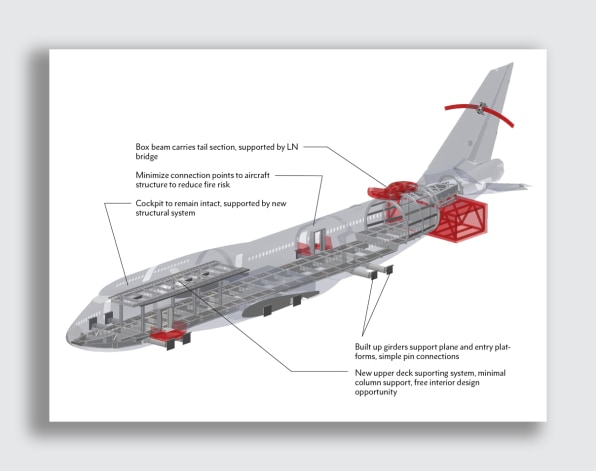
[Image: courtesy Westbank]
As people walk through the galleria when it opens later this year, a full-size plane will float a story above their heads. “The landing gear will be semi-deployed, so it looks like it’s coming into a landing,” Chaplin says. Westbank will use the plane’s interior as an office for leasing properties in the development, holding meetings, and hosting events. But this private office will have a public gallery that’s open for visitors, too.
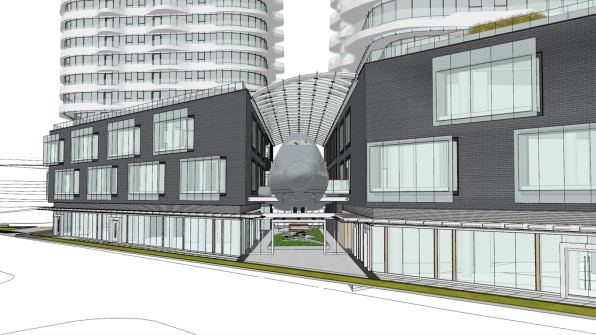
[Image: courtesy Westbank]
Of course, it’s not easy to integrate a full-size airplane into a building. The 747 was the largest plane in the skies when it was introduced back in 1969 and remained so until 2005, when it was unseated by the Airbus A380. Nearly the length of a football field, the plane has a wingspan that is just about as wide as the plane is long. Luckily, Westbank’s galleria is built over a long alley that can accommodate the plane’s length. As for those wings? They had to be clipped, right near the first engine.
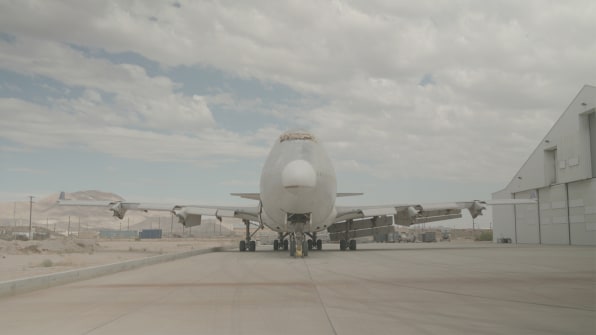
[Photo: Lukas Dong/courtesy Westbank]
Even without all of its components intact, the plane should be quite the spectacle squeezed into this space. The firm acquired a decommissioned 747 that was first built in 1990 and flew for the now-defunct Continental Airlines. Westbank hired specialists to scrape all the white paint and branding off the plane’s body to expose the raw aluminum panels.
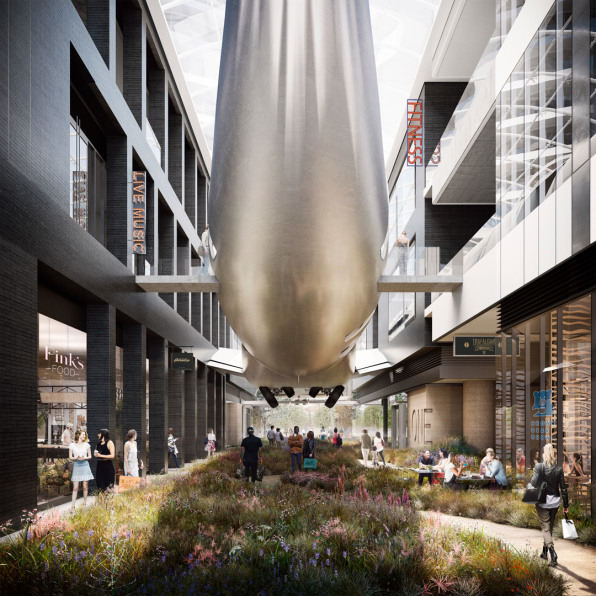
[Image: courtesy Westbank]
Once it’s fully cleaned up, the 747 will be driven in pieces from its home in California to Seattle. Structurally, the plane’s skeleton and shell are completely functional, requiring no extra reinforcement. However, to integrate the 747 into the mostly finished building, architects are replacing the building’s floor. Flooring will run continuously from the building into the plane so that walking on and off the 747 is a seamless experience.
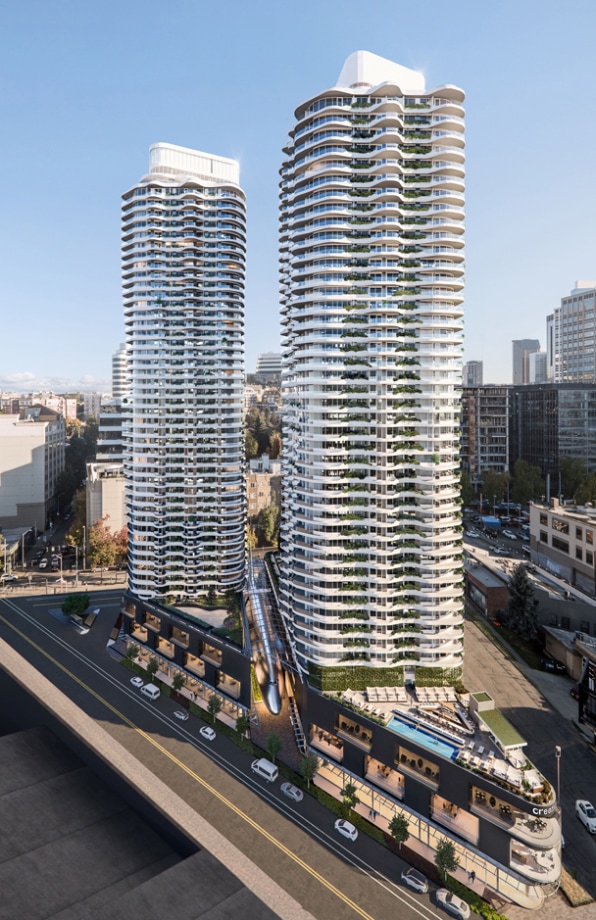
[Image: courtesy Westbank]
As for what it will feel like inside the 747, that’s a detail that Westbank is still holding close to the vest. However, Chaplin insists that the interior won’t feel like a 747 whatsoever. “It’s one of those opportunities where, if we did just create a replica of something else, it wouldn’t be that unexpected,” he says. And the entire project is largely about executing the unexpected. “You walk down the street, turn the corner, and probably the last thing you’d think would be in this space is the 747 fuselage.”





































